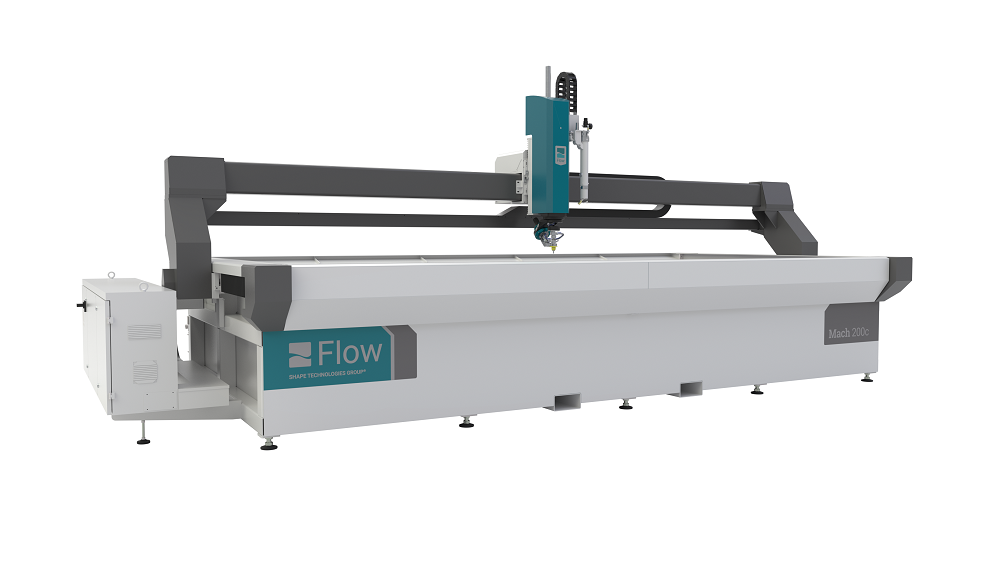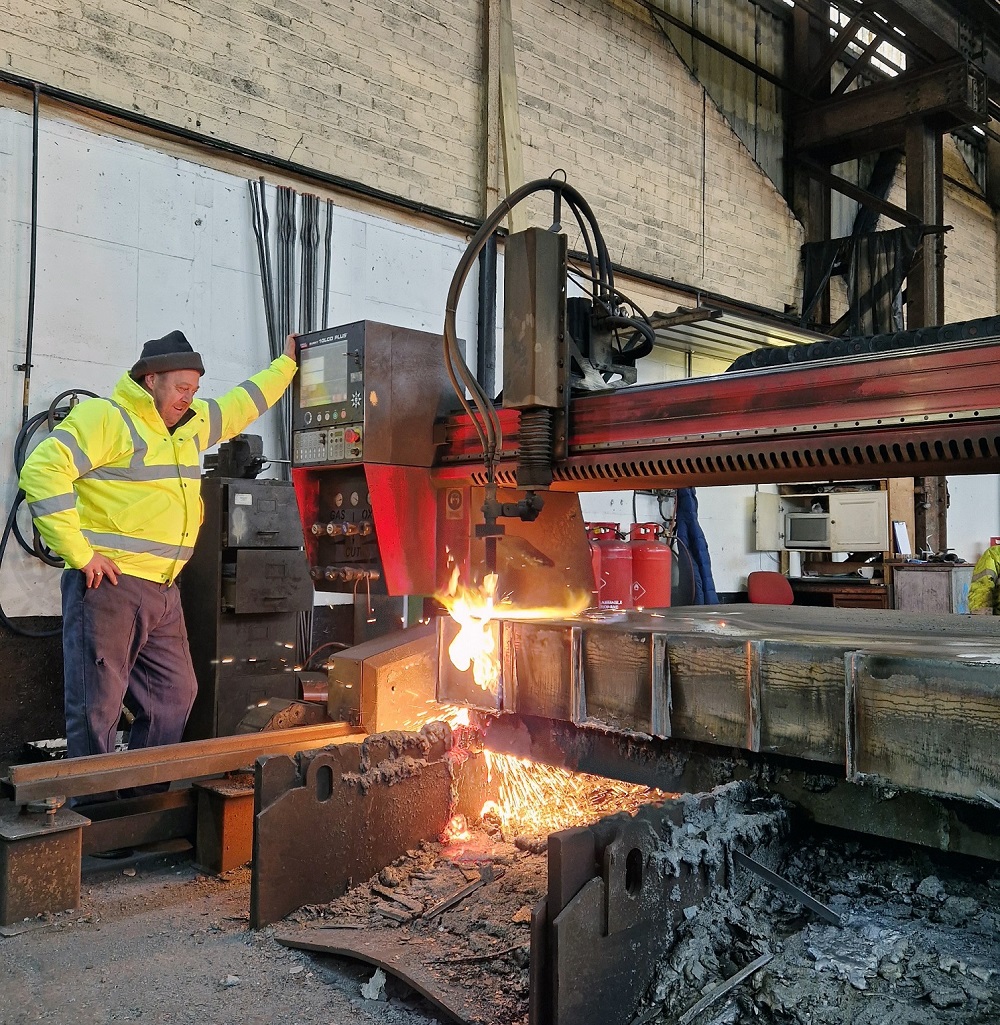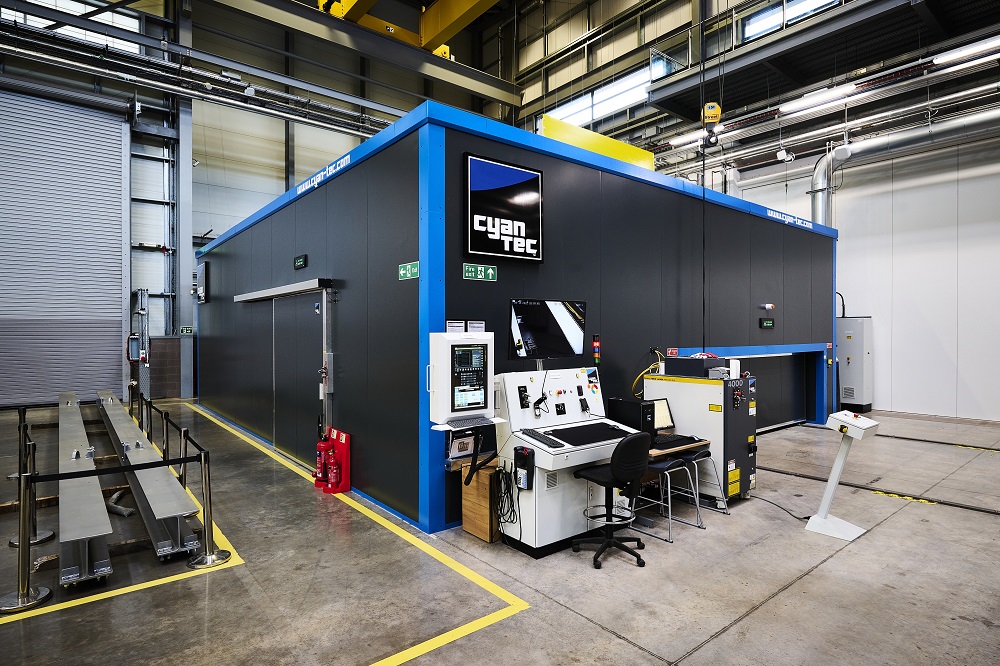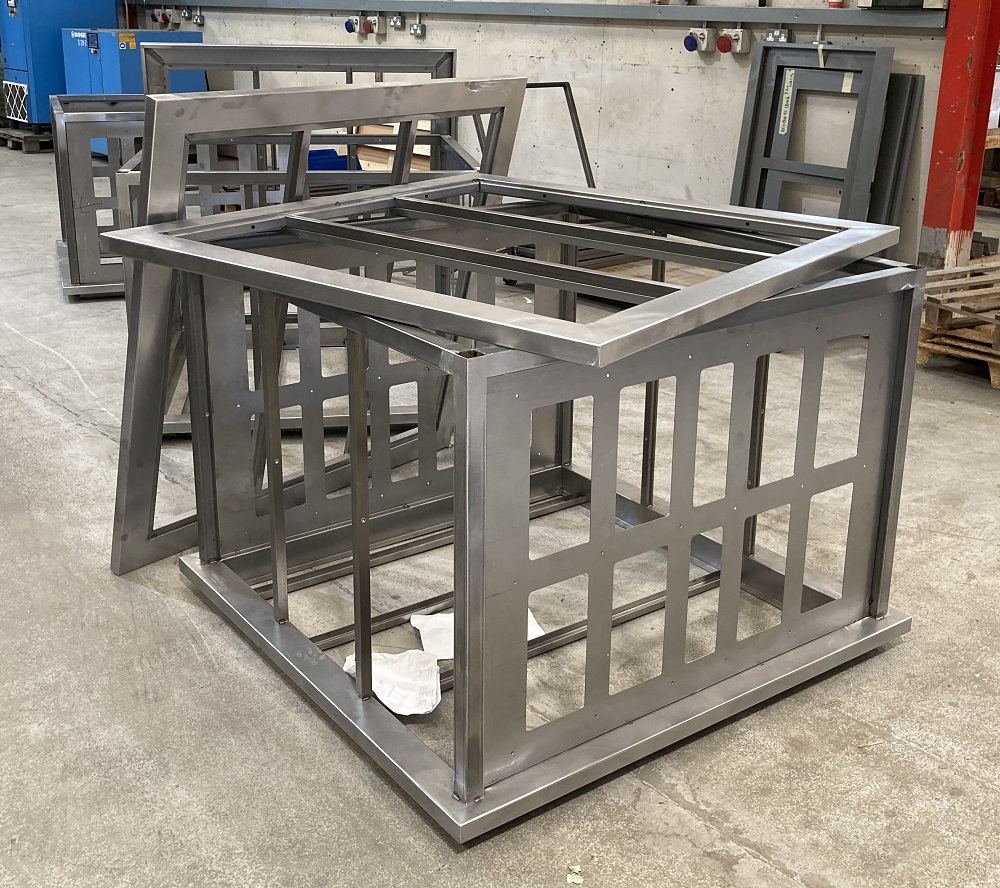Flow International, a developer and manufacturer of ultra-high-pressure waterjet cutting systems, is releasing two ground-up waterjet systems, the Mach 200c and the EchoJet, highlighting a flurry of customer-focused innovation. The latest cutting-edge waterjet solutions showcase Flow’s continued commitment to advancing waterjet technology and expanding product lines to meet the evolving needs of customers.
“Like the other advancements from Flow, the Mach 200c and EchoJet are designed based on intense research of customer needs and real-world applications,” says Tim Fabian, vice president of product management and marketing at Flow.
The Mach 200c provides unprecedented operator access to the waterjet table and delivers improved speed and accuracy at an affordable price point. Featuring Pivot+ waterjet technology, the Mach 200c enables bevel and five-axis cutting of virtually any material, hard or soft, with up to 60° of motion to achieve more complex part cutting needs.
The EchoJet’s design is a fully enclosed and highly flexible waterjet solution. Easy-to-open doors make it a good addition to any shop floor, says Flow, containing spray and reducing cutting noise. Additionally, the EchoJet’s compact design allows it to fit in smaller spaces, where a smaller footprint is required.
“We’re thrilled to be introducing not just one, but two cutting-edge waterjet systems,” says Brian Sherick, president of Flow.“It’s an incredibly exciting time for the Flow team, as we’ve been working tirelessly to bring this much innovation to our customers. This focused effort is all about delivering true value back to our customers and we can’t wait to see the impact these machines will have on their businesses.”
For further information www.flowwaterjet.com



















